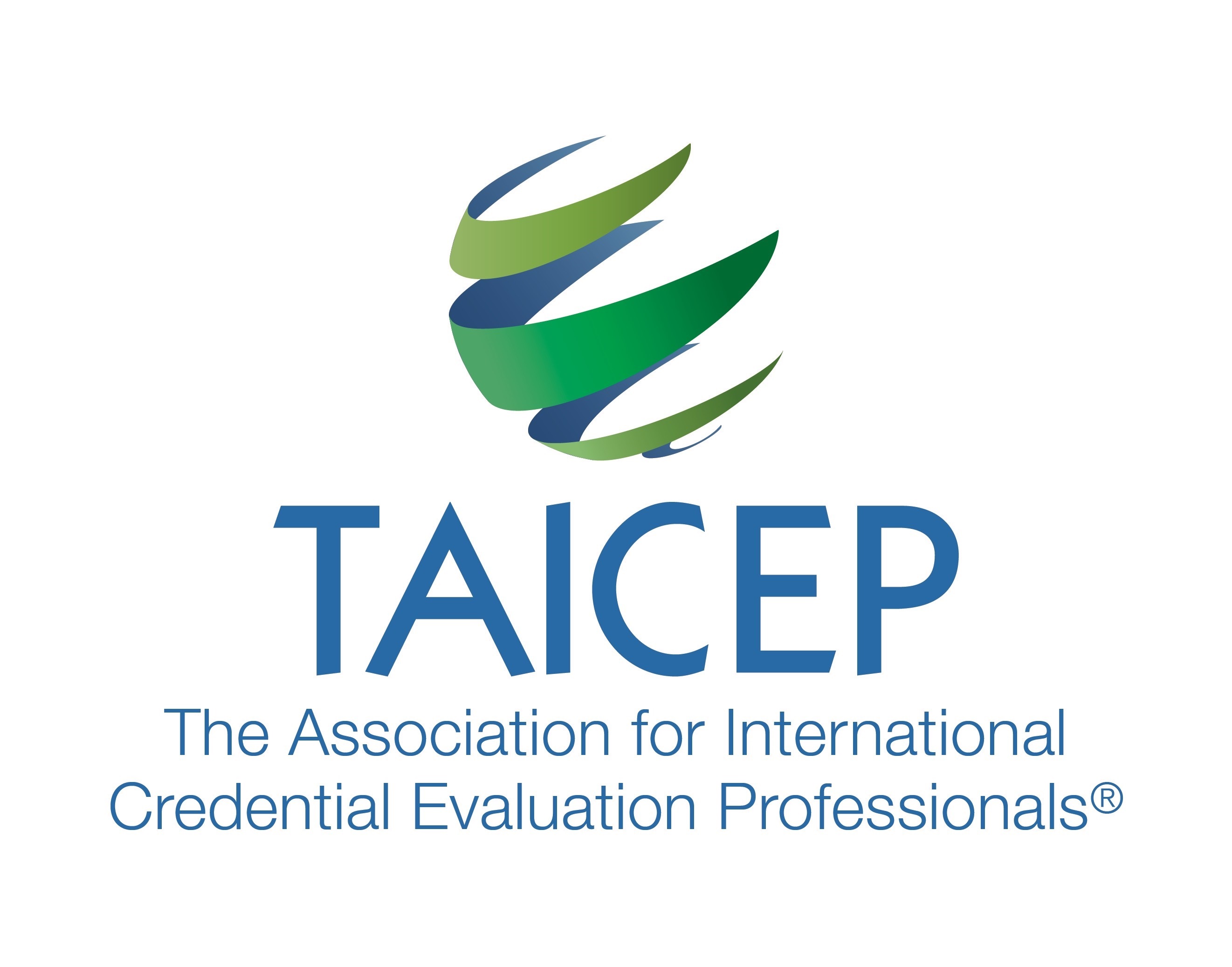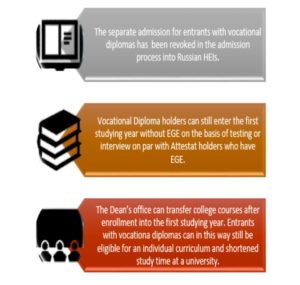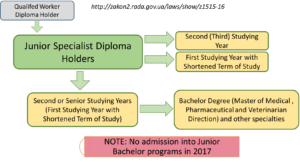Written by: Tatiana McKenna, Educational Credential Evaluators, and Henrik Ohlsson, Swedish Council for Higher Education
Over the last twenty years vocational institution graduates from Russia and Ukraine have enjoyed a two-fold benefit at the admission to tertiary institutions. The option to complete secondary education within a vocational institution (Kolledzh, Uchilishche, Tekhnikum) would usually add about one or two years on top of the general secondary education before entering university. However, at that point, the student, in many cases, would be well underway in their university education, being entitled to have credits transferred into their university study plan, as well as enjoying competition benefits at admission.
This vocational alternative, which results in advanced standing in higher education programs, has in fact become so popular that it has prompted changes in the systems of vocational education and admission policies in both countries, but in somewhat different ways.
Provisions for granting advanced standing to college graduates with vocational qualifications are often listed on the websites of schools and universities. It is also evident on Diploma Supplements issued by universities, in the section that specifies the student’s previous education credentials. However, the format of Ukrainian and Russian Diploma Supplements issued by vocational institutions does not differentiate between standard high school courses and vocational courses that lead to advanced standing at universities. Therefore, it falls on the evaluator to determine the high school vs. undergraduate components in a specific credential, drawing on knowledge of the core subject structure of general secondary education in these countries.
In this article we will make an attempt to introduce you to the most recent changes in the vocational education systems of both countries, with a particular regard to admission policies to tertiary level institutions.
In the Soviet education system, which included Russia, Ukraine and all the other republics of the Soviet Union, vocational education and training could be received on three levels. The first level, “initial vocational education”, was at a secondary school level, usually including the core of a general secondary education. The second level, “mid-level vocational education”, could either be entered directly after class 9 (class 8 before the transition to the 11 year system by the end of the Soviet era), in which case it includes general secondary education and at least about one year of post-secondary vocational education, or after class 11 (10), in which case it would be an entirely vocational education at a post-secondary level. The third level required a completed secondary education for admission, and could partially be paralleled with the second level, but reached further into the post-secondary system, resulting in something comparable to an associate degree.
The post-Soviet system in Russia kept essentially the same structure, but with a partially updated terminology. Vocational institutions in Russia can now be called “Tekhnikum”, “Uchilishche”, “Kolledzh” or “Litsey” (although the latter is not necessarily a vocational institution, but can also be a specialized secondary school with an enhanced curriculum in one of the core subject fields). The advanced standing and competition benefits for students holding vocational qualification also remained until recently.
Article 70 of the Law on Education of the Russian Federation (2012) entitled “General Requirements towards the Organization of Educational Admission into the Bachelor and Specialist Programs” stipulates that individuals with secondary vocational education should be admitted to tertiary institutions on the basis of entrance examinations, the form and criteria of which are to be determined by the HEI.
However, in 2015 Russian HEIs implemented admission policies that directly affected the vocational diploma holders by revoking both the shortened period of study and the separate competitive entrance examinations they were subject to. Since the 2000s students in general secondary education are required to complete the government-administered Unified State Examination (“Yedinyi Gosudarstvennyi Ekzamen”, “EGE”) in order to receive their School Leaving Diploma. (From 2009 this is obligatory in the whole of the Russian Federation.) Then, upon entrance to higher education, complete general competitive entrance examinations are developed by each individual HEI. However, vocational diploma holders are given an alternative option. Instead of taking the Unified State Examination they may undergo a separate testing or interview procedure in addition to participating in the general competitive entrance examinations, which are also required for students who have completed the Unified State Examination. The recent changes put holders of the general school-leaving diploma, “Attestat”, and of Vocational Diplomas on equal grounds.
Despite being subject to admission procedures intended to put them on equal grounds with holders of the Attestat, holders of vocational diplomas may still apply for the transfer of courses after admission has been formally granted. In a process that is separate from the admission and which takes place after the student has been officially enrolled in the first year of study, the Dean’s Office can review a student’s previous education and transfer courses previously completed at the vocational college. This is done by cross-referencing the secondary vocational curriculum and the higher education curriculum to establish a basis for the transfer of courses and exemptions.
A vocational diploma holder may need less time to prepare for a final attestation at a university since he or she has already mastered some of the program content in a vocational school and therefore may be eligible for an individualized study plan, which includes a possible reduction of the study time. The new system of admission requires a lot of clarification and possible improvement since it is not always clear what is the best way to determine content overlap and course duplication between the secondary vocational curriculum and the curriculum of the higher education program.
Institutions of Higher Education started to determine their customized admission policies for vocational diploma holders. For instance, Pedagogical Institutions in the higher education sector have always traditionally worked with vocational diploma holders according to the model “vocational school – university” which provides a logical progression of education for students who studied in a vocational school after grade 9 and then proceeded to the university. Currently, pedagogical schools have established a separate admission policy for vocational diploma holders which include offering individualized “distance/part-time” study options and individualized “distance/ full-time” study options. Other Russian HEIs are providing accelerated programs on the basis of individual study plans for vocational diploma entrants: Financial University under the Government of the Russian Federation, Moscow State University of Psychology and Education, Moscow Technological University, Moscow Pedagogical State University and others.
Access to Higher Education for College Diploma Holders in Russia since 2015
In Ukraine, vocational education in the post-Soviet period has consisted of two basic types of qualifications, “Qualified Worker” and “Junior Specialist”, where the first is comparable to the Russian “Initial Professional Education”, that is, it can be placed mainly on the secondary school level, while the other is a semi-academic degree, allowing the student to shorten the path to a Bachelor’s degree by one or sometimes two years.
Contrary to the 2015 changes in the university admission policies in Russia, the admission to HEIs for college diploma holders in Ukraine remains stable, i.e. the advanced standing to HEIs is still functioning. However, changes in all parts of the education system are now being introduced very rapidly (and sometimes revoked just as fast).
According to the Law on Higher Education (2014) it should be noted, however, that in 2017 there will be no admission into the Junior Bachelor programs, and admission to the Junior Specialist programs will be conducted in accordance with the separate admission conditions which will be extended until 2019. Vocational students with incomplete education (not a full Junior Specialist), wishing to be admitted into HEIs, will have to sit for a so called Independent External Testing (a form of academic aptitude test which from 2017 is also used as Final State Examination, “Derzhavna pidsumkova atestatsiya”, “DPA”).
Holders of Qualified Worker Diplomas can thus be admitted either into the first year of studies at an HEI (sometimes with a shortened period of study) or into the second year of a Junior Specialist education within the same field. Generally speaking, Ukrainian HEIs are quite flexible and autonomous in the ways they grant admission on the basis of previous qualification levels.
Access to Higher Education for College Diploma Holders in Ukraine per MOE Ordinance in 2017
Summary:
The secondary professional education sectors in Russia and Ukraine are very dynamic educational structures which should be monitored closely for possible educational legislative implementations or innovations affecting the process of evaluation. Despite certain changes in the secondary professional education of both countries, the vocational education sector remains a popular alternative – not just for acquiring professional skills and qualifications, but also as an alternative route into higher education, which may still give a considerable advantage.
Resources:
- Бюджетные места в вузах для выпускников колледжей https://www.ucheba.ru/article/848#
- Как поступить в вуз после техникума или колледжа https://postupi.online/journal/postuplenie-v-vuz/kak-postupit-v-vuz-posle-tehnikuma-ili-kolledja/
- Федеральный закон РФ “Об образовании в Российской Федерации”, N 273-ФЗ | ст 70 https://legalacts.ru/doc/273_FZ-ob-obrazovanii/
- Про затвердження Умов прийому на навчання до вищих навчальних закладів України в 2017 році https://osvita.ua/legislation/Vishya_osvita/9990/
- Умови прийому на навчання до ВНЗ України в 2017 році https://pedpresa.ua/170845-umovy-pryjomu-na-navchannya-do-vnz-ukrayiny-v-2017-rotsi.html
- Про затвердження Умов прийому на навчання до вищих навчальних закладів України в 2016 році https://zakon5.rada.gov.ua/laws/show/z1351-15/print1449057831172200#n302
See more in this edition:
Welcome: 2017 Pre-conference Edition
Workshop Descriptions: 2017 Pre-conference Edition
Session Descriptions: 2017 Pre-conference Edition
More Conference Information: 2017 Pre-conference Edition
Big Change: No More National Emblem on the Chinese Degree Certificate: 2017 Pre-conference Edition
Add to Your Library: 2017 Pre-conference Edition
In the News and Publications or Videos: 2017 Pre-conference Edition
2016 Business Meeting Minutes: 2017 Pre-conference Edition
Conference and Organizational Sponsors: 2017 Pre-conference Edition


